James Cecil
Parke
Male
Ireland
1881-07-26
Clones, County Monaghan, Ireland
1946-02-27
Llandudno, Conwy, Wales, Wales
Had he been a Gaelic footballer, or even been in the slightest way Gaelic Minded James Cecil Parke would most surely have been the greatest footballer ever to emanate from Co. Monaghan. Gaelic Games, however, were only in their infancy, or even unknown, in many parts of Co. Monaghan during the Parke Era and James Cecil would hardly even have been aware of their existence. But his love of sport and the fact that he was ranked Fourth in the World in tennis, captained the Irish International Rugby team for two years and was an Olympic Silver medallist, would surely have prompted such a great athlete also to have a go at the Gaelic code, either in Gaelic football or in hurling, had he known about them.
James Cecil Parke was born in Clones, Co Monaghan on the 26th of July 1881 and was to become one of the most extraordinary Irish sportsmen of all time. Few of our great athletes can claim to have represented their country in a variety of sports, yet that is exactly what Parke did, representing Ireland internationally in five different sports - rugby, tennis, cricket, athletics and chess. He was one of the most outstanding international rugby players this country has ever produced, an equally brilliant scratch golfer, a first class cricketer and track sprinter, and a child prodigy at chess, but above all else, a universally renowned tennis star, ranked among the world's Top Four of his era, and winning an Olympic Games Silver Medal in the Men's Doubles of 1908. Described in a 1913 London newspaper as the world's best (tennis) player? he was certainly the most outstanding performer Co Monaghan has ever produced, and was probably the greatest all-round sportsman that Ireland has ever produced.
The Parke family originally came from Longfield Lodge in Co. Leitrim and James Cecil's father was William Parke (1824-1907) who came to live in Clones and later married Mary Pringle from the Emyvale area in the same county. They had eight children, including Maud Pedlow of Lurgan (whose grandson Cecil Pedlow later became an Irish rugby international and a British and Irish Lion) and James Cecil. His mother's family, the Pringles, were a very highly esteemed ascendancy family which had lived at Ballinahone, Emyvale from 1696 to the 1960s. One member of the family, James Pringle, was for many years an MP for South Tyrone.
While a student at Trinity College, Cecil Parke was first capped for Ireland in rugby in 1903 and captained his country in the three home international of the 1907-08 season. A superb centre-threequarter he won no less than twenty caps ... against England in 1904, 06, 07, 08 and 09, against Scotland in 1904, 06, 07, 08 and 09, against Wales in 1903, 04, 05, 06, 07, 08, and 09; against France in 1909; against New Zealand in 1906 and against South Africa in 1907.
Described by the Sport newspaper as a football genius, a great centre and a brilliant performer he was also a marvellous place-kicker and his record of five penalty goals in one international was to last as an Irish record up until 1927 when it was broken by George Stephenson. His last game in the green jersey was on 20th March 1909 when he scored five of Ireland's points - a drop goal and a conversation - in their magnificent 19-8 win over France at Landsdowne Road. He then retired from the game to concentrate on tennis.
In tennis, his favourite sport, he won the first trophy at Clones Lawn Tennis Club in 1900 at age 19. He then went on to win the Irish Men?s Singles title in 1904 and 1905, and then for six years in succession 1908-13. During that same period he won the Men?s Doubles five times - 1903, 1909, 1910, 1911 and 1912 and the Mixed Doubles twice, 1909 and 1912. He was European Singles champion in 1907 and Singles champion of Australiasia in 1912. He represented Ireland in 1912 and 1913 and was picked for the Great British and Ireland team for several internationals, playing on the Davis Cup team in 1909, 1912 and 1913. He was ranked world number six in 1914 and number four in 1920.
In later years he would write: - In 1909 I was again chosen to represent the ?Old Country and visited America as captain of the British and Irish team which consisted of CP Dixon, WC Crawley and myself. Following their victory in the Davis Cup Finals in Australia in 1912, in which he defeated the Australian No. 1 though he himself was ranked No. 2 he wrote: - My four-leafed shamrock pulled me through.
The great American tennis star S Powell Blackmore wrote that he was an ardent admirer of Parke and said that it had always been his secret ambition, from he was a mere fifteen years of age, to play against the great Irishman. Describing Parke's style, Blackmore wrote: - James Cecil Parke has a slight Irish brogue and a big Irish heart. His shots are rather pushed out at you if he is standing still, but once Parke gets on the run, he hurls himself at the ball and you get a hot return, and Parke will go on hurling himself at the ball even at a time when things seen hopeless.
In the world renowned Wimbledon tournament, Parke reached the semi-finals (6th round) of the Men?s Singles in 1910, defeating Beamish in the 5th and again in 1913 when he beat Watson in the 5th only to lose to the eventual winner on both occasions. He did even better in the Mens Doubles, reaching the finals of 1911 (with Hardy), 1912 (with Beamish) and 1913 (with Beamish again) to win the runners-up titles. His greatest achievement here was in 1914 when, partnered by Mrs Larcombe, the Ladies Singles champion, he won the Mixed Doubles title, which had only been inaugurated the previous year, thus becoming the only Irishman ever to win a Wimbledon championship.
His Olympic career was relatively short, but highly successful, first competing in the 1908 Games in London and winning the Silver Medal along with MJG Ritchie, with whom he reached the Men's Doubles Final. In Men?s Singles he got a w.o in the first round, defeated Toth of Hungary 6-1, 6-3, 6-2 in the second round, and then met Froitzheim of Germany in the third. This was described in the official Olympic Report as the match of the whole Olympic Tournament. Parke had advantage four times during the match but let it slip. Both players were accorded a standing ovation at the conclusion.
Along with Ritchie in the Men's Doubles he defeated a Hungarian pair in the 1st round, an Austrian pair in the 2nd round, and then Decugis and Germot of France in the semi final. But they were beaten 9-7, 7-5, 9-7, by Hilliard and Doherty in the final. The report stated that Ritchie did not play up to the standard of Parke, but the Olympic Silver Medal was still his.
His greatest ever performance in tennis was in 1913 when he defeated the USAs No. 1 and the ?Daily Chronicle? of 26th July 1913 reported: -
After one of the finest matches ever played at Wimbledon, JC Parke defeated American?s champion, ME McLoughlin, by three sets to two ... in a five set match that was crowded with thrilling incidents, McLoughlin was beaten by Parke 8-10, 7-5, 6-4, 1-6, 7-5.?
The same paper, in its issue of 29th July 1913, wrote: - ?Within the last six months he (Parke) has beaten Norman Brookes, the Australian champion; AF Wilding, the all-England champion; and American?s first and second players, McLoughlin and Williams. On that record one might almost say he is the world?s best player.?
This great Monaghan sportsman joined the British army at the outbreak of WW1 and held the rank of captain when wounded at Gallipoli in 1915. Promoted major in 1917, he was back on the tennis circuit after peace was restored. In 1920 he again reached the Wimbledon?s Men?s Double Final with Kingscote, but lost to Williams and Garland. In Singles he reached the 5th round but then lost to Tilden, the ultimate winner. His last major title was the Singles title at Hythe, also that year.
Parke is best described by S. Powell Blackmore in his ?Lawn Tennis Up-to-Date 1921.?
?He is one of the world?s greatest fighters, not on account of his cunning, but because of his daring strokes when concerned. Parke is most dangerous when his opponent thinks a shot has beaten him. It is not tactics, it is sinew, superlative nerve and the heart of a big sportsman.?
Following the end of WW1 Parke lived at Llandudno in Wales where he practiced as a solicitor up until his death on 27th February 1946. He had retired from the tennis game in 1925, a sportsman of whom any county should feel extremely proud.
Many of Parke?s lovely trophies were passed on to his niece, later known as ?Mrs Dr. Killen? who lived in Aviemore House in Monaghan town. Some years before her death, Mrs Killen donated these trophies to Monaghan County Museum where they are currently on display and should be visited by all Monaghan lovers of sport. What a pity he couldn?t have packed in a Sam Maguire Cup in the middle of them at some stage!
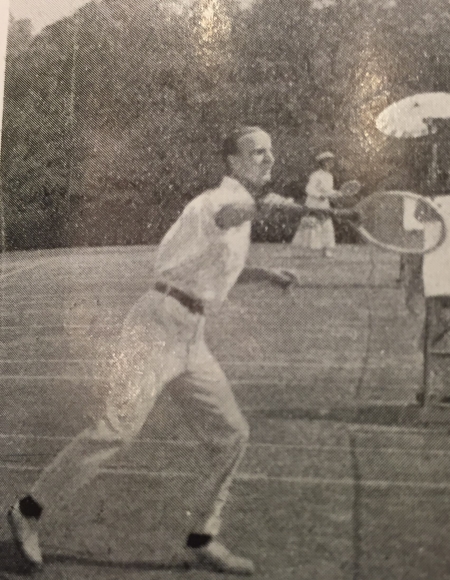
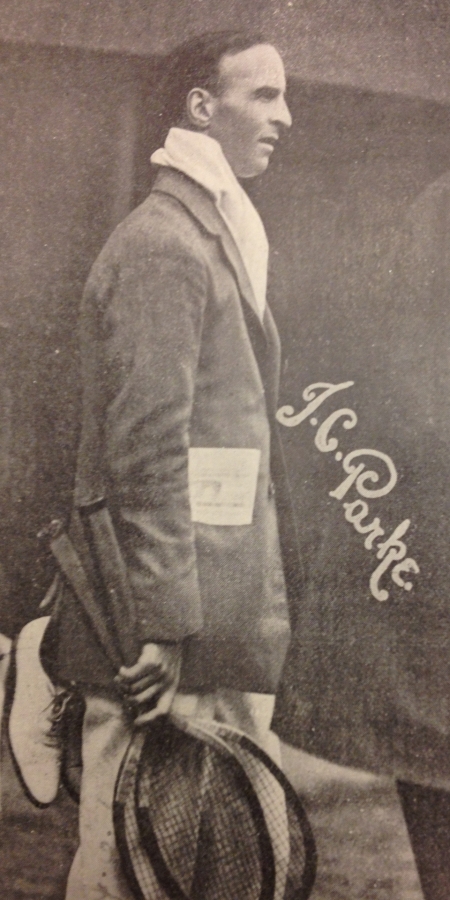
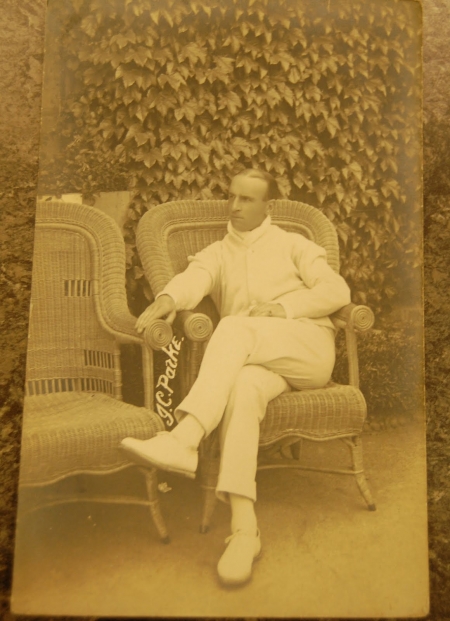
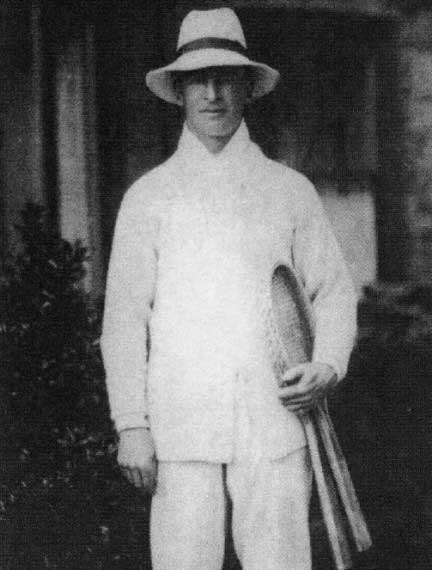
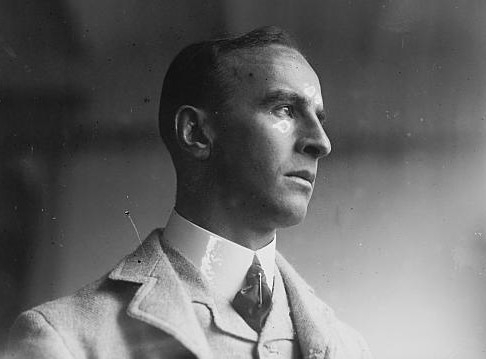
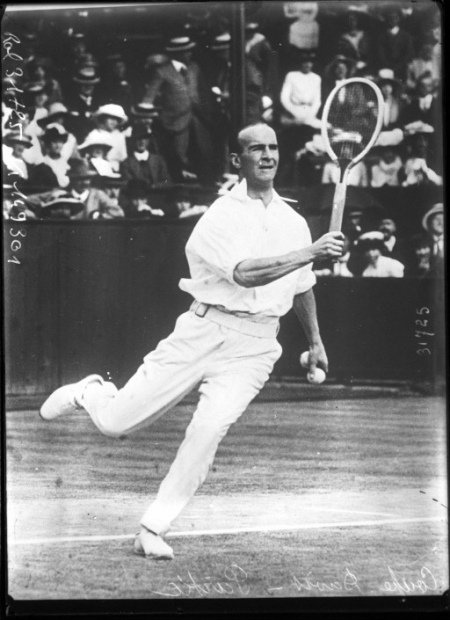
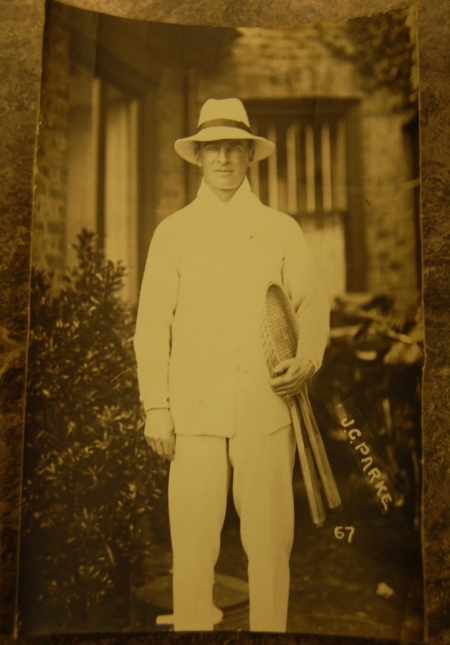
1896 - 1920
25
217
178
1920 - Hythe (Amateur)
1919 - Northern Lawn Tennis Association Tournament (Open)
1913 - South of England Championships (Amateur)
1913 - Northern Lawn Tennis Association Tournament (Open)
1913 - Irish Championships (Amateur)
1912 - Australian Open (Grandslam)
1912 - Northern Lawn Tennis Association Tournament (Open)
1912 - Scottish Championships (Amateur)
1912 - Irish Championships (Amateur)
1912 - Victorian Championships (Amateur)
1911 - Northern Lawn Tennis Association Tournament (Open)
1911 - Irish Championships (Amateur)
1910 - Clones (Amateur)
1910 - Midland Counties Championships (Amateur)
1910 - Irish Championships (Amateur)
1909 - Irish Championships (Amateur)
1908 - Irish Championships (Amateur)
1907 - European Championship (Amateur)
1907 - Coventry (Amateur)
1905 - Irish Championships (Amateur)
1904 - Dublin University LT Championships (Amateur)
1904 - Irish Championships (Amateur)
1904 - Tullamore (Amateur)
1903 - Dublin University LT Championships (Amateur)
1902 - Dublin University LT Championships (Amateur)
Round 1
James Cecil Parke 1 *
Campbell Kingdon
6-4
6-2
6-3
Round 2
James Cecil Parke 1 *
Bill Johnston
7-5
2-6
6-2
8-6
Round 3
Bill Tilden 1 *
James Cecil Parke
6-3
6-2
6-4
Round 1
James Cecil Parke 1 *
F. de Weck
6-2
6-2
Round 2
James Cecil Parke 1 *
W.D. Urwick
6-0
6-3
Round 3
Gordon Lowe 1 *
James Cecil Parke
6-1
6-4
Quarterfinals
James Cecil Parke 1 *
John (Brian) Gilbert
6-2
6-2
Semifinals
James Cecil Parke 1 *
Herbert Roper Barrett
w.o.
Final
James Cecil Parke 1 *
Brian Norton
8-6
6-1
Quarterfinals
James Cecil Parke 1 *
George Watt
6-4
ret.
Semifinals
James Cecil Parke 1 *
Athar Ali Fyzee
6-2
6-3
Final
Dick Williams jr 1 *
James Cecil Parke
6-3
6-4
7-5
Final
James Cecil Parke 1 *
George Dodd
0-6
6-3
9-7
6-0
Poule
James Cecil Parke 1 *
Max Decugis
6-2
4-6
3-6
6-3
6-3
Poule
James Cecil Parke 1 *
Maurice Germot
7-5
6-1
6-3
Poule
James Cecil Parke 1 *
A. Georges Watson
6-2
6-2
6-3
Poule
James Cecil Parke 1 *
Paul de Borman
6-4
6-3
6-2
Round 1
James Cecil Parke 1 *
Charles Dixon
11-9
6-1
6-3
Round 2
James Cecil Parke 1 *
George Watt
6-2
6-0
ret.
Round 3
James Cecil Parke 1 *
Gordon Lowe
6-1
6-3
6-4
Round 4
James Cecil Parke 1 *
George Caridia
6-2
6-2
6-1
Quarterfinals
Otto Froitzheim 1 *
James Cecil Parke
5-7
6-2
9-7
6-2
Poule
Norman Brookes 1 *
James Cecil Parke
6-2
4-6
6-3
1-6
7-5
Round 1
James Cecil Parke 1 *
Harold Issidro Tower Aitken
6-3
6-2
6-3
Round 2
James Cecil Parke 1 *
Alexander Sutherland (Alex) Drew
6-3
6-4
6-1
Round 3
James Cecil Parke 1 *
Geoffrey Blenkinsop Youll
2-6
6-4
6-1
6-2
Quarterfinals
Alfred Beamish 1 *
James Cecil Parke
7-5
6-3
6-3
Round 1
James Cecil Parke 1 *
R.D. Nolan
w.o.
Round 2
James Cecil Parke 1 *
sam O'Donnell
6-1
6-4
6-4
Round 3
James Cecil Parke 1 *
Alfred Beamish
6-2
4-6
6-3
6-3
Round 4
James Cecil Parke 1 *
Arthur Lowe
7-5
6-0
7-5
Quarterfinals
James Cecil Parke 1 *
Ralph Douglas Watson
6-4
6-1
6-4
Semifinals
Maurice McLoughlin 1 *
James Cecil Parke
6-4
7-5
6-4
Round 1
James Cecil Parke 1 *
Alfred Leonard Bentley
6-2
6-1
6-1
Round 2
James Cecil Parke 1 *
John Frederick Graham
6-1
6-1
6-3
Quarterfinals
James Cecil Parke 1 *
Robert Malcolm Graham
6-3
5-7
8-6
6-1
Semifinals
James Cecil Parke 1 *
Alfred Jones
6-1
6-2
6-2
Final
James Cecil Parke 1 *
George Alan Thomas
6-2
6-4
6-3
Round 2
James Cecil Parke 1 *
Charles Harold Hole
6-0
6-1
Round 3
James Cecil Parke 1 *
William D. Radcliffe
6-2
6-1
Round 4
James Cecil Parke 1 *
Erik Larsen
6-2
6-1
Quarterfinals
James Cecil Parke 1 *
Hope M. Crisp
6-2
6-2
Semifinals
James Cecil Parke 1 *
Charles Dixon
6-3
7-5
Final
James Cecil Parke 1 *
Arthur Lowe
6-3
7-5
2-6
6-2
Round 1
James Cecil Parke 1 *
Ormond Cyril Wrigley
6-0
6-3
6-1
Round 2
James Cecil Parke 1 *
Frank Shutes
6-1
6-2
6-0
Quarterfinals
James Cecil Parke 1 *
Samuel Ernest (Ernest) Charlton
6-1
6-1
6-1
Semifinals
James Cecil Parke 1 *
Alfred Beamish
6-2
6-4
6-3
Final
James Cecil Parke 1 *
Tony Wilding
6-2
7-5
6-8
2-6
7-5
Poule
James Cecil Parke 1 *
Dick Williams jr
6-2
5-7
5-7
6-4
6-2
Poule
James Cecil Parke 1 *
Maurice McLoughlin
8-10
7-5
6-4
1-6
7-5
Round 1
James Cecil Parke 1 *
Gordon Lowe
4-6
2-6
6-1
6-0
6-4
Quarterfinals
James Cecil Parke 1 *
Geoffrey Morton Ollivier
6-4
6-1
8-6
Semifinals
James Cecil Parke 1 *
Robert Newton King Swanston
6-2
6-2
6-3
Final
James Cecil Parke 1 *
Alfred Beamish
3-6
6-3
1-6
6-1
7-5
Round 2
James Cecil Parke 1 *
John Rendall
6-3
6-4
2-6
6-2
Round 3
André Gobert 1 *
James Cecil Parke
6-3
6-4
6-4
Round 1
James Cecil Parke 1 *
Robert Matthew (Kiddie) Kidston
w.o.
Round 2
James Cecil Parke 1 *
Alfred Jones
6-1
6-3
6-4
Quarterfinals
James Cecil Parke 1 *
Alfred Beamish
w.o.
Semifinals
James Cecil Parke 1 *
Geoffrey Morton Ollivier
6-1
6-2
6-3
Final
James Cecil Parke 1 *
Gordon Lowe
6-3
6-0
6-2
Round 1
James Cecil Parke 1 *
Harold Robert Price
6-4
6-3
6-4
Round 2
James Cecil Parke 1 *
John Felix O'Connell (Jack) Miley
6-0
6-1
6-1
Quarterfinals
James Cecil Parke 1 *
Alexander Weldon Molony
6-0
6-4
6-2
Semifinals
James Cecil Parke 1 *
James Zimmermann
6-3
6-2
6-4
Final
James Cecil Parke 1 *
George Alan Thomas
6-2
6-1
6-0
Round 1
James Cecil Parke 1 *
A.J. Ross
6-2
6-4
8-6
Round 2
James Cecil Parke 1 *
Hope M. Crisp
6-4
6-2
6-3
Round 3
James Cecil Parke 1 *
Charles Henry Mercer
6-2
6-0
7-5
Quarterfinals
James Cecil Parke 1 *
Percy Hugh Robbs
6-3
4-0
ret.
Semifinals
Otto Froitzheim 1 *
James Cecil Parke
6-0
9-7
3-6
5-7
6-3
Round 2
James Cecil Parke 1 *
John Edwin Clapham Jukes
8-6
6-2
Quarterfinals
James Cecil Parke 1 *
J.A. Greig
6-1
6-2
Semifinals
James Cecil Parke 1 *
R.S. Hamilton
6-4
6-1
ret.
Final
James Cecil Parke 1 *
Stanley Doust
w.o.
Round 1
James Cecil Parke 1 *
Arthur Cyril Ransome
6-1
6-2
6-0
Round 2
James Cecil Parke 1 *
Walter Carey
6-1
6-1
6-3
Quarterfinals
James Cecil Parke 1 *
Thomas Douglas Good
6-3
6-1
8-6
Semifinals
James Cecil Parke 1 *
Stanley Doust
w.o.
Final
James Cecil Parke 1 *
Theodore Mavrogordato
6-3
1-6
6-3
6-4
Poule
James Cecil Parke 1 *
Rodney Heath
6-2
6-4
6-4
Poule
James Cecil Parke 1 *
Norman Brookes
8-6
6-3
5-7
6-2
Round 1
Herbert Roper Barrett 1 *
James Cecil Parke
6-3
6-1
6-4
Round 1
James Cecil Parke 1 *
W.E. Cooke
6-2
6-2
6-2
Quarterfinals
James Cecil Parke 1 *
Henry William Paul Scroope
6-4
6-1
6-1
Semifinals
James Cecil Parke 1 *
Thomas Douglas Good
6-3
6-0
4-6
6-2
Final
James Cecil Parke 1 *
Simon Frederick Scroope
6-3
6-1
6-1
Round 1
James Cecil Parke 1 *
James Horkheimer
6-2
6-1
6-2
Round 2
James Cecil Parke 1 *
Augustus Mark Hendricks
6-4
6-0
6-1
Quarterfinals
James Cecil Parke 1 *
John Frederick Stokes
9-7
6-2
ret.
Semifinals
James Cecil Parke 1 *
Samuel Ernest (Ernest) Charlton
6-0
6-4
6-0
Final
James Cecil Parke 1 *
Stanley Doust
7-5
5-76-1
8-6
Round 2
James Cecil Parke 1 *
John Flavelle
6-1
6-1
6-1
Round 3
James Cecil Parke 1 *
George Miéville Simond
6-2
6-3
ret.
Round 4
James Cecil Parke 1 *
Theodore Mavrogordato
1-6
8-6
2-6
7-5
6-4
Quarterfinals
James Cecil Parke 1 *
Alfred Beamish
8-6
5-7
6-4
6-3
Semifinals
Tony Wilding 1 *
James Cecil Parke
7-5
6-1
6-2
Round 1
James Cecil Parke 1 *
Major Alfred Bellingham Cairnes
w.o.
Round 2
James Cecil Parke 1 *
Wylie Grant
6-2
6-0
ret.
Quarterfinals
James Cecil Parke 1 *
Thomas Douglas Good
6-0
6-0
6-3
Semifinals
James Cecil Parke 1 *
Val Miley
6-0
6-1
6-1
Final
James Cecil Parke 1 *
Alfred Beamish
6-1
6-3
8-6
Round 1
James Cecil Parke 1 *
Leonard Gordon Wrigley
6-3
6-2
6-3
Quarterfinals
Beals Wright 1 *
James Cecil Parke
2-6
2-6
8-6
6-4
6-0
Round 2
James Cecil Parke 1 *
E.V. Jones
6-4
6-1
Quarterfinals
James Cecil Parke 1 *
Wylie Grant
6-2
6-3
Semifinals
James Cecil Parke 1 *
Walter Cecil Crawley
6-1
6-2
Final
James Cecil Parke 1 *
Stanley Doust
9-7
6-3
6-2
Semifinals
James Cecil Parke 1 *
Vincent P. Kennedy
6-0
6-1
Final
James Cecil Parke 1 *
Russell McWilliam
6-3
6-2
6-4
Round 1
James Cecil Parke 1 *
H.S. Fellowes
6-0
6-1
6-0
Quarterfinals
James Cecil Parke 1 *
Samuel Ernest (Ernest) Charlton
6-2
8-6
2-6
6-4
Semifinals
James Cecil Parke 1 *
John Alfred Lenox Figgis
6-0
6-0
6-1
Final
Beals Wright 1 *
James Cecil Parke
divided
Wright
taking
the
cup
Round 1
James Cecil Parke 1 *
Augustus Mark Hendricks
6-2
6-0
6-2
Round 2
Herbert Roper Barrett 1 *
James Cecil Parke
6-3
6-2
6-4
Round 1
James Cecil Parke 1 *
Roger Mary Sweetman
6-1
6-1
6-4
Round 2
James Cecil Parke 1 *
Arthur Meagher Cave
6-1
6-4
6-1
Quarterfinals
James Cecil Parke 1 *
Alexander Weldon Molony
6-0
6-3
6-1
Semifinals
James Cecil Parke 1 *
John Frederick Stokes
6-1
6-0
6-3
Final
James Cecil Parke 1 *
Alfred Beamish
6-3
6-4
3-6
2-6
6-3
Round 2
James Cecil Parke 1 *
Friedrich Wilhelm Starke
6-0
6-2
Round 3
James Cecil Parke 1 *
Walter Lange
6-2
6-1
Quarterfinals
James Zimmermann 1 *
James Cecil Parke
7-5
6-2
Round 1
James Cecil Parke 1 *
Richard Bayer
w.o.
Round 2
James Cecil Parke 1 *
James Zimmermann
7-9
6-4
6-3
Round 3
James Cecil Parke 1 *
Dr. A. Magnus
6-3
6-3
Quarterfinals
Heinrich Georg Schomburgk 1 *
James Cecil Parke
4-6
6-4
6-3
Round 1
James Cecil Parke 1 *
Bertram Cecil Hopson
6-4
6-1
Round 2
James Cecil Parke 1 *
Edward Joseph Sampson
6-1
6-2
Quarterfinals
James Cecil Parke 1 *
Arthur Lowe
7-9
6-3
6-1
Semifinals
James Cecil Parke 1 *
Walter Cecil Crawley
6-2
2-1
ret.
Final
Stanley Doust 1 *
James Cecil Parke
6-2
6-0
Poule
William Jackson Clothier Sr. 1 *
James Cecil Parke
6-4
6-3
8-6
Poule
Bill Larned 1 *
James Cecil Parke
6-3
6-2
6-3
Round 2
James Cecil Parke 1 *
Wilmot Ernest Lane
6-2
6-2
Round 3
James Cecil Parke 1 *
Bertram Cecil Hopson
6-1
6-1
Quarterfinals
Harry Alabaster Parker 1 *
James Cecil Parke
w.o.
Round 1
James Cecil Parke 1 *
Josef Rössler-Ořovský (Roessler)
w.o.
Round 2
James Cecil Parke 1 *
Ede Toth
6-1
6-3
6-2
Round 3
Otto Froitzheim 1 *
James Cecil Parke
6-4
11-9
6-4
Round 1
James Cecil Parke 1 *
Charles Frederick Scroope
6-0
6-1
6-0
Round 2
James Cecil Parke 1 *
Thomas Douglas Good
6-0
6-2
6-2
Quarterfinals
James Cecil Parke 1 *
Alfred Beamish
6-3
6-4
11-9
Semifinals
James Cecil Parke 1 *
John Frederick Stokes
7-5
7-5
6-0
Final
James Cecil Parke 1 *
Wylie Grant
4-6
6-1
4-6
6-3
6-0
Round 1
G.G. Woodruff 1 *
James Cecil Parke
w.o.
Round 2
James Cecil Parke 1 *
Wilfred Pollen Haviland
6-2
6-3
Quarterfinals
James Cecil Parke 1 *
John Frederick Stokes
6-4
6-2
Semifinals
James Cecil Parke 1 *
Frederick A. L'Estrange Burgess
6-4
6-2
Final
John Mycroft Boucher 1 *
James Cecil Parke
6-2
6-3
6-2
Poule
Bill Larned 1 *
James Cecil Parke
6-3
6-3
7-5
Poule
Beals Wright 1 *
James Cecil Parke
8-10
3-6
6-4
7-5
6-2
Round 2
James Cecil Parke 1 *
Andrew Laurie Macfie
6-3
6-1
6-2
Quarterfinals
James Cecil Parke 1 *
Alexander Weldon Molony
6-1
6-1
6-2
Semifinals
James Cecil Parke 1 *
Xenophon Casdagli (Kasdaglis)
6-2
4-6
4-6
6-1
6-4
Final
Arthur Gore 1 *
James Cecil Parke
6-3
4-6
6-1
6-8
6-4
Round 1
James Cecil Parke 1 *
bye
Round 2
James Cecil Parke 1 *
Bernard Oswald Roe
7-5
6-4
Quarterfinals
James Cecil Parke 1 *
Samuel Ernest (Ernest) Charlton
2-6
6-1
6-3
Semifinals
Major Josiah George Ritchie 1 *
James Cecil Parke
7-5
6-2
Round 2
James Cecil Parke 1 *
S. Liffey
6-2
6-0
6-4
Quarterfinals
James Cecil Parke 1 *
Herbert Newcombe Craig
9-7
8-10
4-6
8-6
6-4
Semifinals
Thomas Douglas Good 1 *
James Cecil Parke
w.o.
Round 1
James Cecil Parke 1 *
Bennet L'Estrange Burgess
6-2
6-1
Quarterfinals
James Cecil Parke 1 *
C.T. Stewart
6-2
6-2
Semifinals
James Cecil Parke 1 *
Major Josiah George Ritchie
10-12
6-4
7-5
Final
James Cecil Parke 1 *
Herbert Newcombe Craig
6-1
6-2
6-2
Round 1
James Cecil Parke 1 *
A. Cherry
w.o.
Round 2
James Cecil Parke 1 *
E.V. Jones
6-2
6-3
Quarterfinals
James Cecil Parke 1 *
Noel Henry Essex Partridge
6-2
6-0
Semifinals
James Cecil Parke 1 *
John Frederick Stokes
w.o.
Final
John Mycroft Boucher 1 *
James Cecil Parke
6-2
8-10
6-3
9-7
Round 2
James Cecil Parke 1 *
A.S. Hill
6-1
6-3
Quarterfinals
James Cecil Parke 1 *
Turketil George Pearson Greville
6-1
6-0
Semifinals
James Cecil Parke 1 *
Henry Lionel Brutton
6-2
6-0
Final
James Cecil Parke 1 *
Major Josiah George Ritchie
10-8
7-5
8-6
Round 1
James Cecil Parke 1 *
Richard Clifford
2-6
6-0
6-4
2-6
8-6
Quarterfinals
James Cecil Parke 1 *
Thomas Douglas Good
9-7
6-1
6-0
Semifinals
Henry Vere Shirley Dillon 1 *
James Cecil Parke
6-2
6-1
6-1
Round 2
James Cecil Parke 1 *
E.V. Jones
6-8
6-1
6-4
Quarterfinals
James Cecil Parke 1 *
Bennet L'Estrange Burgess
w.o.
Semifinals
John Mycroft Boucher 1 *
James Cecil Parke
6-3
6-0
Round 1
James Cecil Parke 1 *
Charles Graham Adamson
6-2
6-0
Quarterfinals
James Cecil Parke 1 *
C.T. Stewart
6-1
6-1
Semifinals
James Cecil Parke 1 *
Thomas Douglas Good
1-6
7-5
6-1
Final
James Cecil Parke 1 *
Alexander Horsbrugh Porter
6-3
6-3
1-6
6-3
Final
Mr. Rockferry 1 *
James Cecil Parke
w.o.
Challenge Round
Henry Vere Shirley Dillon 1 *
James Cecil Parke
6-4
6-1
8-6
Round 1
James Cecil Parke 1 *
Henry Vere Shirley Dillon
4-6
6-4
6-4
6-1
Quarterfinals
James Cecil Parke 1 *
E.O. O'Farrell
6-1
6-2
6-1
Semifinals
James Cecil Parke 1 *
John Frederick Stokes
6-2
4-6
6-4
6-4
Final
James Cecil Parke 1 *
Thomas Douglas Good
6-1
6-2
6-4
Quarterfinals
James Cecil Parke 1 *
A.G. Adamson
6-3
6-3
Semifinals
James Cecil Parke 1 *
John Frederick Stokes
6-1
6-1
Final
James Cecil Parke 1 *
Herbert Newcombe Craig
6-3
3-6
10-8
7-5
Challenge Round
James Cecil Parke 1 *
Henry Vere Shirley Dillon
6-3
4-6
6-3
4-6
6-1
Round 1
James Cecil Parke 1 *
William Saint George Frederick Perrott
6-1
6-4
2-6
6-0
Quarterfinals
James Cecil Parke 1 *
C.T. Stewart
6-2
6-4
6-3
Semifinals
James Cecil Parke 1 *
Roger Mary Sweetman
4-6
8-10
8-6
8-6
6-3
Final
William Stewart Drapes 1 *
James Cecil Parke
6-0
3-6
6-3
3-6
6-4
Challenge Round
James Cecil Parke 1 *
Henry Vere Shirley Dillon
6-1
6-4
6-3
Round 1
James Cecil Parke 1 *
Harold Segerson Mahony
w.o.
Quarterfinals
Roger Mary Sweetman 1 *
James Cecil Parke
7-5
7-5
3-6
3-6
6-3
Semifinals
James Cecil Parke 1 *
H.W. Jones
8-10
6-1
2-6
6-4
6-3
Final
James Cecil Parke 1 *
John Frederick Graham
6-3
10-8
6-2
Round 1
James Cecil Parke 1 *
Augustus Wallace MacGregor
6-0
6-3
Quarterfinals
James Cecil Parke 1 *
Janes Alexander Neish
6-0
6-1
Semifinals
James Cecil Parke 1 *
Sidney George Hough
6-1
6-1
Final
Sydney Lawrence Fry 1 *
James Cecil Parke
6-1
6-4
1-6
6-2
Round 1
Robert Manning Gilbert 1 *
James Cecil Parke
8-6
4-6
7-5
Round 1
James Cecil Parke 1 *
Russell McWilliam
6-8
6-3
6-2
Quarterfinals
James Cecil Parke 1 *
Mr. Scope
w.o.
Semifinals
Robert William Pringle 1 *
James Cecil Parke
6-3
6-1
Round 1
James Cecil Parke 1 *
John Conrad (Con) Pringle
6-3
4-6
6-4
Semifinals
Robert William Pringle 1 *
James Cecil Parke
6-1
7-5